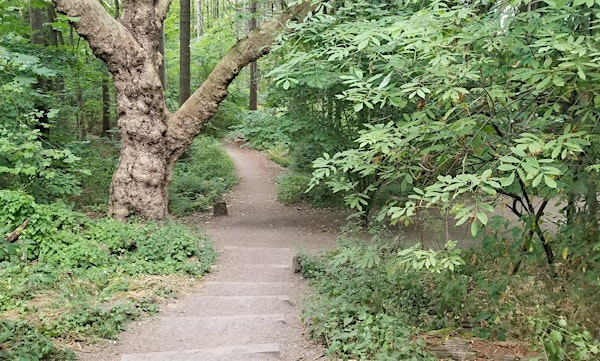Interlaken Park is one of Seattle’s most tranquil urban escapes. Located between Capitol Hill and Montlake neighborhoods, this 51-acre wooded area provides a noteworthy retreat from city life while showcasing an important piece of Seattle’s environmental legacy. Today, we will explore the winding trails and historical significance of this cherished green space, following the paths that generations of Seattleites have walked for over a century.
As we progress through Interlaken Park, we will uncover not only its natural appeal but also how this unique location connects to Seattle’s broader narrative. From dense forest canopies to scenic viewpoints, Interlaken offers an opportunity to experience nature in the urban landscape. Let’s begin our exploration of this park that continues to attract locals and visitors alike.
Introduction to Interlaken Park
Interlaken Park exemplifies Seattle’s innovative approach to urban planning in the early 20th century. John Charles Olmsted, nephew of the famous landscape architect Frederick Law Olmsted, designed Interlaken Boulevard in 1903 as part of a park system for the growing city. The boulevard cleverly incorporated an existing bicycle path, creating a scenic connection between Washington Park Arboretum and Capitol Hill’s Volunteer Park. Olmsted’s vision characterized this stretch as “one of the most desirable” branch parkways in the city, recognizing its potential to enhance Seattle’s livability through accessible green spaces.
The park’s name itself reveals its history – “Interlaken” means “between lakes,” reflecting its geographical position in the corridor between Lake Washington and Lake Union. What began as the “Volunteer Hill Parkway” evolved into a valued community asset that balances recreational needs with natural preservation. As Seattle grew around it, Interlaken remained relatively unchanged, its steep ravines and dense vegetation protecting it from development. Today, walking through Interlaken connects visitors to this historical legacy, offering a living example of how Olmsted’s principles of blending nature with urban life continue to enhance Seattle’s distinctive character and livability.

- Explore the tranquil trails of Interlaken Park, starting your journey at 19th Avenue East and East Galer Street. Source: eventbrite.com
Visitor’s Guide to Interlaken Park
Our 2-mile walking route begins at the intersection of 19th Avenue East and East Galer Street, where ample on-street parking is available for those arriving by car. From this starting point, you’ll descend into the park on winding, unpaved trails that feel surprisingly remote despite being minutes from downtown Seattle. The first leg takes you through dense forest canopy, with sword ferns and native understory plants lining the path. As you make your way down to Interlaken Boulevard, watch for varied bird species and listen for the soothing sounds of small creeks that run through the ravine during rainy seasons. While the trails include some slopes and uneven terrain, most paths are well-maintained and accessible for those comfortable with moderate hiking.
After reaching Interlaken Boulevard, our route continues east to 24th Avenue before turning back to explore the western section of the park. One highlight not to miss is Bagley Viewpoint near the park’s western boundary, offering spectacular views of Lake Union, downtown Seattle, and on clear days, the Olympic Mountains beyond. This vista point, accessible via a short paved path, provides a perfect spot for photos or a brief rest. While exploring the park, remember that most trails lack signage, so newcomers might want to download a map beforehand. The park is open from dawn to dusk year-round, with spring showcasing blooming trillium and summer offering cool relief under the mature tree canopy that makes Interlaken one of Seattle’s most refreshing warm-weather destinations.
Header Image Source: AI-generated image
